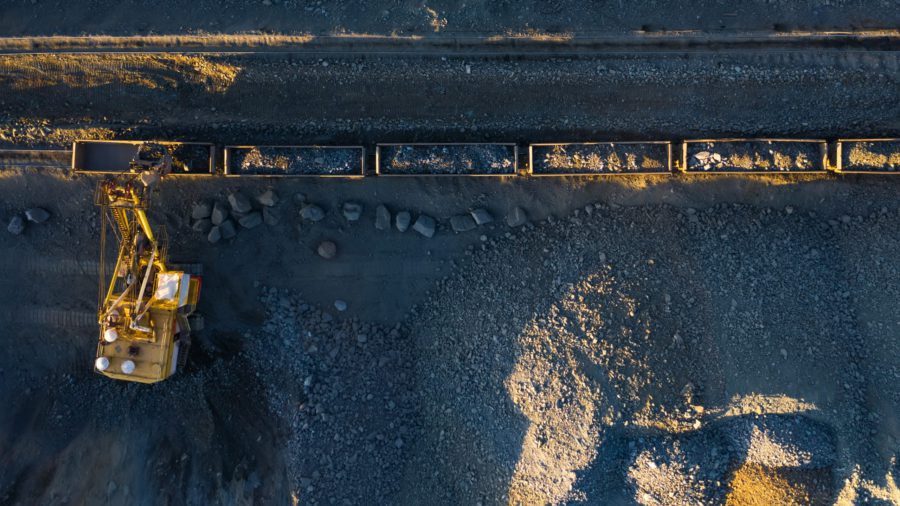Thermal coal price hits 10-month high as Chinese buyers snap up cargoes

A crackdown by the Chinese government on surplus thermal coal has had a knock-on effect on the price – spelling good news for miners of the fuel that investors and energy consumers love to hate.
The price of high-grade Australian thermal coal, the benchmark for the Chinese market, has climbed 20% from a low of $49 per tonne in January to over $59/t, according to Argus, a price reporting agency.
It’s all down to threats by the Chinese government to punish regional governments that fail to close coal mines and steel mills considered surplus to domestic needs. Bloomberg explains what is happening:
Provincial governments must set capacity reduction targets by July 15 and submit detailed phase-out plans by the end of this month, said Xu Shaoshi, chairman of National Development and Reform Commission, the nation’s top economic planner, according to a report by official Xinhua News Agency. About 800,000 coal and steel jobs are expected to be cut this year amid President Xi Jinping’s supply-side reforms, the Ministry of Human Resources and Social Security said separately on Friday.
Provincial governments that fail to stick to capacity cut plans or miss their targets will be “seriously punished,” Xu said, according to the report Thursday. Regions shouldn’t waver in the face of slowing economic growth and unemployment and refrain from restarting closed mines and mills, he said.
The country is on a mission to seriously curtail the output of coal and steel, which are expected to fall by a respective 280 million tons and 45 million tonnes this year, says Bloomberg, as it deals with the fallout from slower economic growth and environmental mandates to improve air quality. Coal mines have been ordered to reduce capacity and operate only 276 days of the year versus 330 days previously.
The threats to shutter more production has Chinese buyers looking for outside sources to shore up their inventories. The Financial Times reports (subscription required) that over the last week, buyers have been purchasing cargoes on the spot market for fear that domestic supplies will run thin.
The country is on a mission to seriously curtail the output of coal and steel, which are expected to fall by a respective 280 million tons and 45 million tonnes this year
“There are so many cuts coming through domestically that China’s consumers will probably need to engage the seaborne [or import] market,” Tom Price, analyst at Morgan Stanley, told the FT. The newspaper says the bank is predicting China will import some 145 million tonnes of coal this year, representing around 16% of the seaborne trade.
But it’s a temporary measure. Mining.com reported in June that China has pledged to source 20% of its energy from low-carbon sources and cut emissions per unit of GDP by 60% of 2005 levels by 2030.
CRU, a research firm, expects China is “achieving the vast majority of its targets for thermal substitution”. China added 138 gigawatts of new power generation capacity in 2015, an increase of 10% compared to 2014 – more than half of this reflected increases in nuclear, hydro and renewable power according to the report:
“This shift is only going to be accelerated, following the pause to approvals of thermal plants in areas with an excess of capacity. And when we look at this in more detail, we find the impact of that substitution on coal market share in the South East is extreme – it falls from 64% to 49% over the next 4 years.”
{{ commodity.name }}
{{ post.title }}
{{ post.date }}


Comments
ZULIA
COAL SUPPLY OF ORIGIN INDONESIA WITH VARIOUS TYPES OF CALORIE.
excuse me,
Greetings and peace always for all of your friends or users of coal mining.
I introduce myself to you all. my name is zulia, origin from Indonesia. I represent several mines throughout Indnesia for sale.
because I represent them and connective words of all the various types of coal miners and GAR or (composition calories) Indonesia. However you relate to or deal directly with the owner of the coal miners.
if any of you are interested in buying or looking for the origin of coal country, I would be honored and proud you chose me.
I will bring you trust me as a trust and full responsibility, for the purpose of your satisfaction ..
Thank you for your taking the time to read my offer it.
Greetings
zulia.
director and owner of the company in PT.PUTRANASA MANDIRI
Whats App: +6281232682686.
Email: matandmin.energy@gmail.com